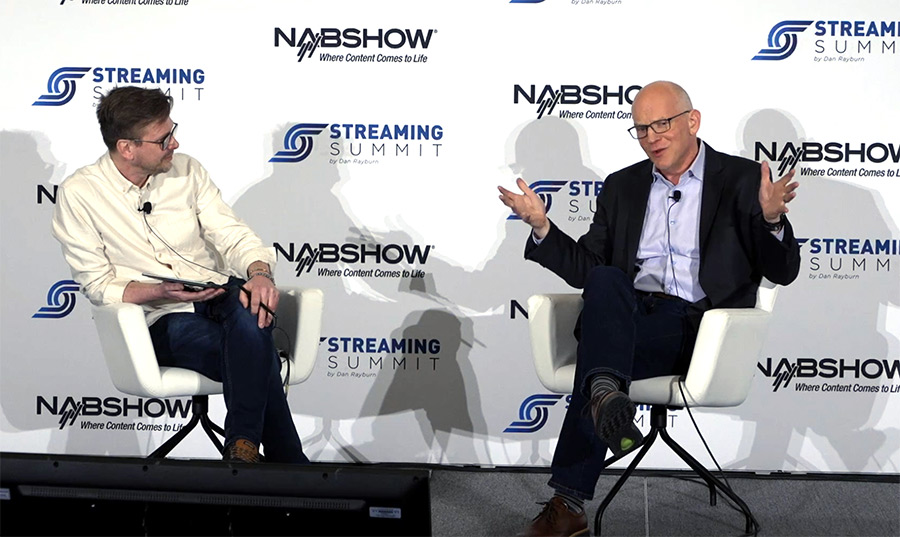I recently shared a blog exploring MediaKind’s new operational approach to progress cloud-based media deployments and how it is designed to align with modern expectations. Managed Cloud Applications (MCA) is a new commercial and deployment model for cloud-based software, lying somewhere between Software-as-a-Service (SaaS) and software subscription models. You can read more about the rationale and logistics behind MCA in our latest application paper.
MCAs enable broadcasters, TV operators, and content owners to deliver their media services in the best way – from optimizing cost of ownership to providing flexibility of scaling or usage. Each of these customer segments faces unique challenges and requirements when deciding on their cloud migration strategy, driven by evolving market dynamics and changing relationships with their customers. MCAs help them best overcome these challenges through optimal resource efficiency and expert industry support. This blog will shine a spotlight on the challenges and opportunities for TV operators.
What is an MCA?
As I alluded to at the start, an MCA is not a full SaaS architecture, where the software vendor does everything in cloud environments, with the software vendor’s choice of cloud service provider. It’s also not aligned with a software licensing scheme, where the customer manages the entire process. Instead, it’s a middle-ground solution that’s readily accessible and leaves the TV operator in charge, retaining full ownership of their cloud infrastructure.
Through an MCA approach, the TV operator can use the cloud service provider to gain access to the functionalities of the cloud while still operating their channels and making changes to their content. They still own the cloud infrastructure, have full visibility over what’s happening, and can access the infrastructure whenever needed. When it comes to operational maintenance, upgrades, fail-overs, and fault diagnosis, MediaKind takes those burdens on and operates them via our own in-house experts.
Why MCA?
TV operators are under pressure to drive additional capabilities to their media businesses amid growing competition from streaming service providers, whilst simultaneously reducing ongoing costs for their media services and operations.
There is an increasing need for flexibility in resource and infrastructure usage, with event-based services and DR platforms driving ephemeral use of what would have traditionally been fixed capacity headend services, the use of platform services based on user demand, and the streaming of content being scaled based on delivery needs.
This need for flexibility, along with many of the operator’s own cloud service provider strategies, is a key enabler to increasing the use of cloud infrastructure. However, the operation of media-specific services in a cloud environment requires specialized operational capabilities.
New technology adoption such as the latest video encoding standards or technology (e.g. AI-based codecs) that can reduce costs, adds to these operational needs.
The MCA solution
TV operators must now find ways to make their media businesses run more efficiently while their customers enjoy their Pay-TV services. An MCA model removes the pain points of operating the cloud infrastructure and instead, puts the onus on third-party experts with the knowledge to operate their own software and cloud assets. Training or hiring internal technical staff to perform software upgrades is not an efficient use of their time or resources compared with outsourcing this process to a third-party expert, who can do so to scale and in a cost-efficient manner.
In an MCA deployment, MediaKind provides the software and operates it in the public cloud. MediaKind oversees the lifecycle of the software but doesn’t run it day-to-day from a content perspective in terms of the channel line-up. This is dictated by the TV operator who decides what they do with their content and when.
A secondary application of MCA for TV operators is the ability to scale efficiently within an operator’s network. TV operators are finding that there are more streaming clients within their Pay-TV services, and in the future, we’ll likely see more smart TVs with an OTT-style claim on them from the operator. This means more streaming services available through the smart TV ecosystem, and additional streaming-based functionalities made available such as integrated social media functions, betting, and shopping. MediaKind has the technology to scale to large volumes without impairing the network’s ability to deliver the content.
Working together to transition to the cloud
MediaKind works with several cloud providers, including Google Cloud Platform, Microsoft Azure and AWS, to deploy services onto any platform as needed. Our cloud-native, Kubernetes deployed media processing software enables playout, live and on-demand encoding, OTT, or broadcast delivery, with customization and integration within the operator’s wider environment. By choosing our MCA approach, TV operators gain the flexibility and capabilities of the cloud, whilst retaining the ability to work with any cloud service provider. At the same time, our MCA model also mitigates the burden and responsibility of resiliency and lifecycle management.
To learn more, download our application paper ‘Media in the Cloud: The evolution of operational models from on-prem integrations to Managed Cloud Applications’ below.



